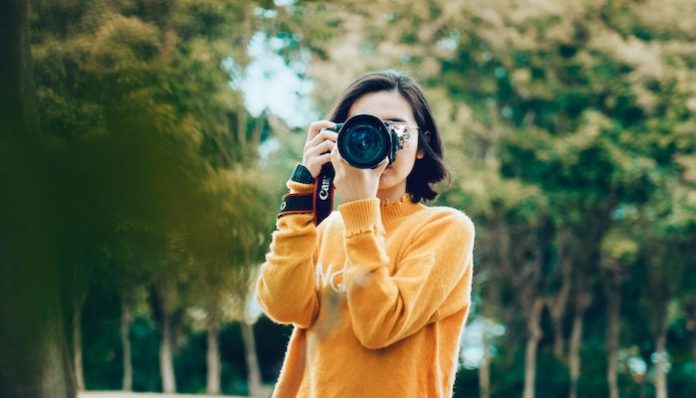
“Photography for me is not looking; it’s feeling. If you can’t feel what you’re looking at, you’re never going to get others to feel anything when they look at your pictures.”
-Don McCullin
August 19 is World Photography Day. The day we celebrate the positive impact photography has played on our lives and our homage to the history of photography. On this day, the tradition is for everyone to share one single image. The purpose: to share with the world what your world looks like. It is also a way to promote positivity and create a sense of unity. But, why is August 19th World Photography Day? Here is the history…
In 1837, Louis Daguerre, a French photographer and artist, and Joseph Nicephore Niepce, a French inventor, developed the Daguerreotype. A type of photographic process, the Daguerreotype, had a short life-span (1839-1860), but played a huge role in the history of photography. Unlike modern-day photo paper, the Daguerreotype was dense and not flexible. It was sharp and fragile and had to be stored in a safe container. Images taken with the Daguerreotype had to be exposed for up to 15 minutes. It was an image on a silver-copper plate.
Since the material was costly, when studios opened in the 1840s, only the wealthy could have their portraits taken. The Daguerreotype was used not only to capture portraits, but also to capture still life, landscapes, and events. On August 19, 1839, the French government purchased the patent and introduced the Daguerreotype as a gift to the world. Images on the Daguerreotype still exist today. They are rare but you can find them in collections around the world.
Years before he invented the Daguerreotype, Niepce captured a popular image, and most likely the first permanent image of nature, entitled, “View from the Window at Le Gras.” For this image, he used heliography. He coated a pewter plate with bitumen and placed it in a camera pointing towards an upstairs window. After exposure of eight hours, Niepce brushed the plate with lavender oil and white petroleum. The combination helped to dissolve the pieces of bitumen that had not been hardened—the result: the first permanent photograph of a landscape.
Photography and the way we capture images have changed so much over the years. Here are some more notable events in photography’s history:
1021: Invention of the Camera Obscura
The invention of the camera obscura opened up a whole new way to create art. People could see the world as is instead of through a painting or sculpture.
1685: Invention of the Portable Camera
Early cameras were big and were difficult to transport. A portable camera made it easier to get those early images.
1826: The World’s First Photograph
The first photograph help to pave the way for advancements in photography. By examining the first photograph, scientists were able to learn about light techniques as well as ways to improve the camera.
1888: Kodak Sells Its First Camera
George Eastman is credited with coining the term Kodak and manufacturing what became paper film. The first Kodak was small, portable, and contained a 100-exposure roll of film.
1939: World War II Helped Shape A New Photography Style
- Photographing the war helped open the doors to a new style of photography: photo journalism / social documentation. Capturing soldiers on the front lines as well as life in Europe during that time helped people realize just what was going on oversees.
1948: Polaroid Introduces the First Instant Photograph
Marketed as “picture in a minute” and introduced in Boston just before Christmas in 1948, Jordan Marsh brought a whole new style of photography into the world. People could instantly see what they captured instead of waiting to develop the full roll of film.
1991: Invention of the Professional Digital Camera
Originally created in 1975 by Steven Sasson for Kodak, the digital camera, or DSLR, (Digital Single Lens Reflex) didn’t come on the market until the early 1990s. With mixed opinions, some people were intrigued to see how the digital camera and memory card worked, while others remained with the traditional film.
2001: Introduction of Cell Phones with Cameras
Released in South Korea in June 2000, the first camera phones didn’t reach the United States until 2001. With this new invention, people could easily snap a picture wherever they were without having a camera.
2007-present: The launch of the iPhone helped bring out the photographer in everyone.
The iPhone’s sophisticated, and continuously improving camera, helps to create amazing images at your fingertips. Sometimes it’s hard to tell the difference between a professional-grade image and an iPhone image.

As a freelance photographer and someone who has a passion for photography, I feel every day should be World Photography Day. We should share a photo every day to promote positivity and introduce people to something they may never get to see in person. Pictures are essential and powerful. When I look at a photo of mine, I instantly return back to the exact moment I captured it. It’s like an instant time machine. Pictures help us remember the past and keep it alive. They help us to stay in touch with those who have left. Pictures preserve a moment. As the saying goes, “The best thing about a picture is that it never changes, even when the people in it do.”


















